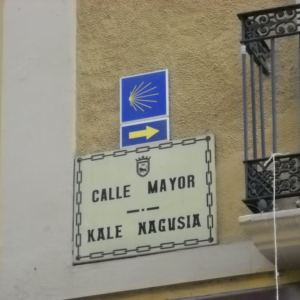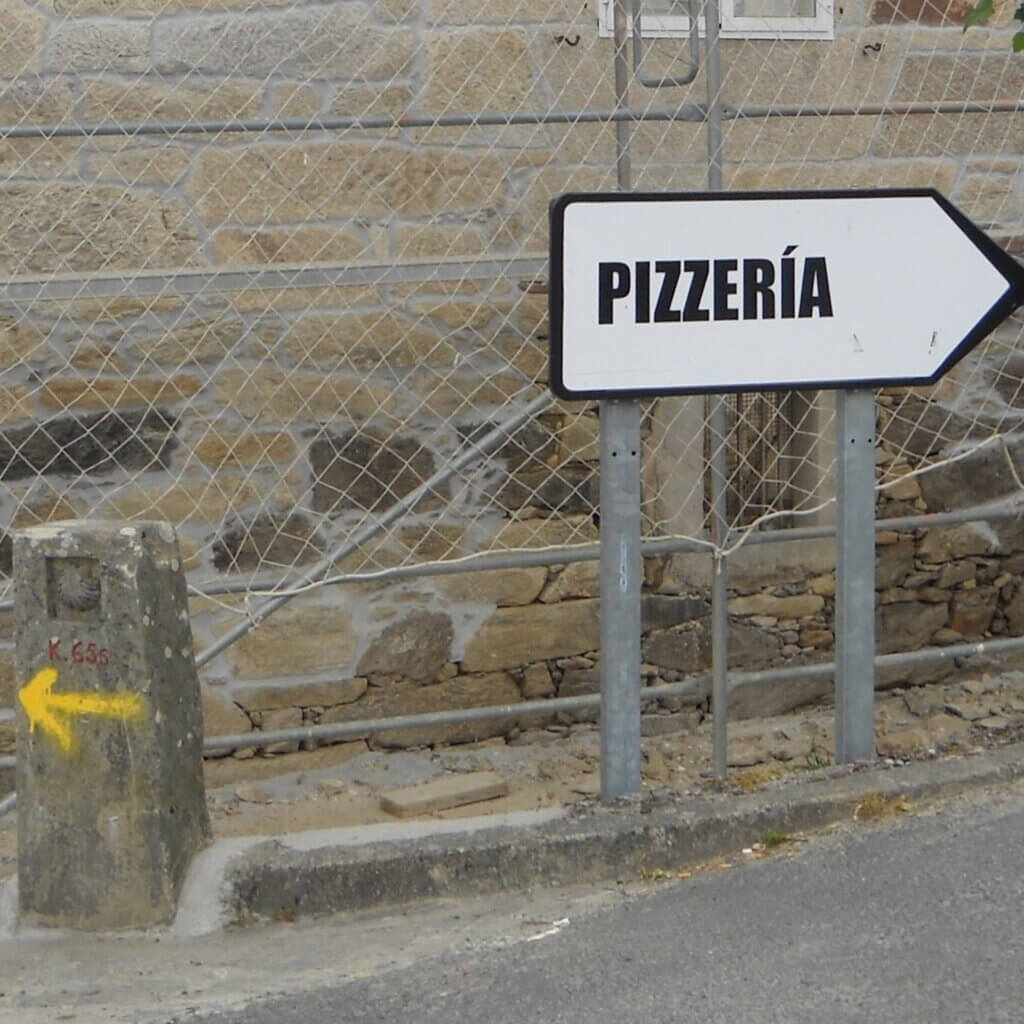Uh . . . which way do I go???
You may have heard that the Camino routes in France, Spain, and Portugal are well marked with yellow arrows and it is impossible to get lost.
True or false? (both)
See, it depends on a couple of things. First, how well are you paying attention? Last year on the trail I was walking behind a Frenchman who I watched go right on by a turn that was marked with three yellow arrows and two stone trail markers.
Click here for a collection of photos of Camino trail markers.
How is that possible? He was so lost in thought that he wasn’t looking for the signs leading to Santiago.
The second thing is that you may very well have a terrible sense of direction. If that’s the case, then this post is for you. (Actually, this post is for everyone, because even those with strong inner compasses occasionally get off track.)

I got lucky one year and had in one of the groups I was leading a woman who was severely directionally challenged. I will call her Maggie, and she wasn’t so much challenged as she was completely deficient in this area. Impaired. Lost.
Maggie would go the wrong way out of the elevator every day, in a building she had worked in for more than five years.
Since I am so far at the other end of that spectrum (one of my travel-mates had previously dubbed me the “walking Lonely Planet guidebook”), I had to learn fast how to help her navigate the Camino.
I am so grateful for Maggie, because she taught me things I never would have learned on my own (and she was a sweet, gentle soul, too, and fully capable in many other ways).
Here is what we came up with together:
- Stop only at an arrow. Not before, not after, but exactly at the arrow. Then when you are ready to start walking again, look at the arrow and go that way.
- Keep other pilgrims in sight in front of you and follow them.
- If you’re not sure which way to go, wait for next pilgrim to come along behind you. And while we’re at it . . .
- Start your day early so there are always pilgrims behind you.
- Let people know you need their company, and ask them to walk with you or to keep an eye out for you. In other words, make friends!
- Keep 20 euros tucked away as taxi money. If you get off course, ask the barkeep at the closest bar to call for a taxi to take you back to the Camino.
- If you are alone on the trail and haven’t seen a trail marker for more than 20 minutes, it’s time to ask a local for help.
Come to think of it, these are good guidelines for all pilgrims, directionally challenged or not. See, it is possible for anyone to get off track. But if you stay alert and are willing to ask for help (especially after 20 minutes of not seeing an arrow), you will never be more than a kilometer or so away from the Camino trail.

And one more thing, a bit of a pro-tip, if you will. The scallop shell symbols? The aren’t pointing the way to Santiago. Well, sometimes they are, but more often the scallop shell is simply letting you know you are still on the trail, still headed to Santiago de Compostela.
So be sure to follow the yellow arrows. And don’t hesitate to ask someone if you’re not sure.
Asking, “Camino de Santiago?” while pointing in the direction you think you are supposed to be going usually does the trick.
Buen Camino, dear pilgrim!

